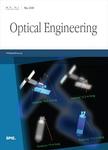版权所有:内蒙古大学图书馆 技术提供:维普资讯• 智图
内蒙古自治区呼和浩特市赛罕区大学西街235号 邮编: 010021

作者机构:MIT Informat & Decis Syst Lab Cambridge MA 02139 USA
出 版 物:《OPTICAL ENGINEERING》 (光学工程)
年 卷 期:2002年第41卷第1期
页 面:150-166页
核心收录:
学科分类:08[工学] 080401[工学-精密仪器及机械] 0804[工学-仪器科学与技术] 081102[工学-检测技术与自动化装置] 0811[工学-控制科学与工程] 0702[理学-物理学]
基 金:ODDR&E MURI, (F49620-96-1-0028, GC123919NGD) National Science Foundation, NSF Air Force Office of Scientific Research, AFOSR, (F49620-98-1-0349) Boston University, BU
主 题:synthetic aperture radar model-based automatic target recognition target model generation scattering models data association expectation-maximization method parametric estimation radar cross section
摘 要:A key issue in the development and deployment of model-based automatic target recognition (ATR) systems is the generation of target models to populate the ATR database. Model generation is typically a formidable task, often requiring detailed descriptions of targets in the form of blueprints or CAD models. We propose a method for generating a 3-D target model directly from multiple SAR images of a target obtained at arbitrary viewing angles. This 3-D model is a parameterized description of the target in terms of its component reflector primitives. We pose the model generation problem as a parametric estimation problem based on information extracted from the SAR images. We accomplish this parametric estimation in the context of data association using the expectation-maximization (EM) method. Our model generation technique operates without supervision and adaptively selects the model order. Although we develop our method in the context of a specific data extraction technique and target parameterization scheme, our underlying framework is general enough to accommodate different choices. We present results demonstrating the utility of our method. (C) 2002 society of Photo-Optical Instrumentation Engineers.